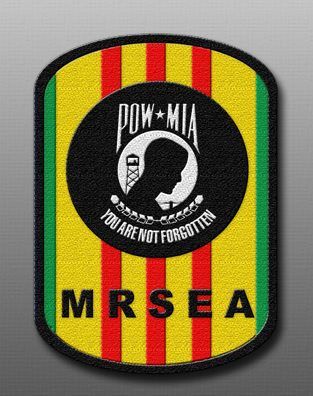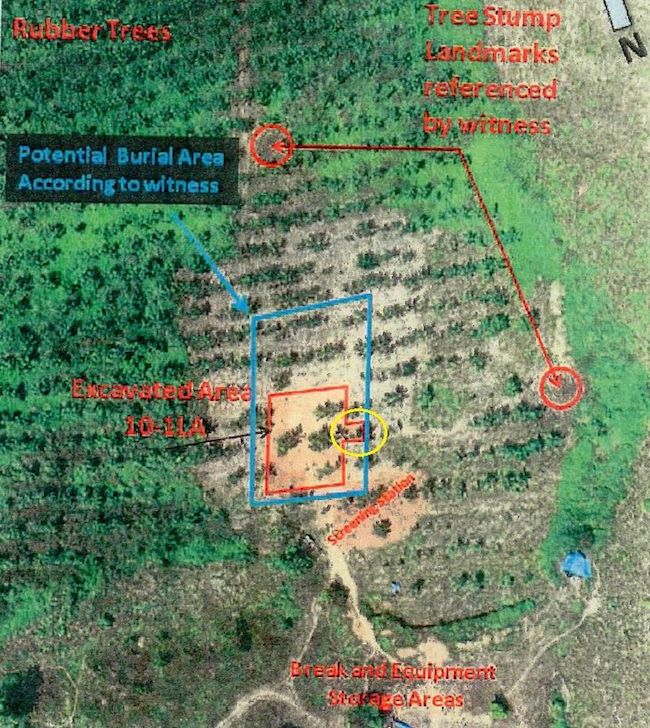
Paul Clever of M R S E A: Maximum Recovery in Southeast Asia recently provided an update about MRSEA's 2015 Recovery Mission via their Facebook page (see below).
January 14, 2016: Mission Overview: Part One
I (Paul) have come to learn each of the four missions completed has taken on a personality of its own. This year's trip seemed to identify the inherent risks which each member takes while going about our effort to resolve POW/MIA cases in Laos.
Brian took a nasty fall at the farm in Thailand and then a motorcycle crash soon after we arrived in Laos. His mission ended early and the four broken ribs along with some colorful road-rash was actually counted as lucky: it could have been worst.
We pushed our luck and stayed an extra day at the Piittmann burial site because of the progress we made towards locating Piittmann. The extended time allowed for word to spread to the Provincial Office we were in the area and had hired locals to do some foliage-clearing work. The pistol carried by the Provincial Officer as he entered the area we were in did not bother me near as much as the AK-47 carried by one of the local militia members. Nita correctly deduced this was just an old fashion communist corruption shakedown and six-hundred dollars satisfied the local hunger and we were released.
As part of our negotiation with the official we assured him we would leave Laos immediately and that is exactly what we did. We did not agree to stay out of Laos. Back in Thailand we took a little time to evaluate our mistakes.. Bobby then went back to the US while Nita and I returned to Laos to continue our efforts.
The road which took Nita and I south from Hwy 18 to the Sompoi POW Camp site turned out to be eight miles of deep and fine sand. The motorcycles stayed bogged down and we expended way too much energy making the distance. We arrived at our camp site with twenty minutes of daylight to spare. As I got into my jungle hammock for the night my body was already telling me a serious boundary of fatigue had been crossed. Nita and I were limited on the amount of water we could carry so our portion was regulated. The next morning I had only recovered a small measure of energy and by the time we reached the village of Sompoi I had all the symptoms of heat exhaustion.
Nita did what Nita does: she took care of me. I was able to get enough fluids, glucose, and soup broth down to relieve the symptoms before we left Sompoi. For those who have not felt the cramping of heat exhaustion let me tell you: it is like bathing in a pool of pain: Every muscle everywhere hurting all at once. It would be nearly three days later before I had enough fluids taken in to allow for a urination.
To answer the obvious question: Yes. On several occasions along the way everybody on the Team questioned "What the hell am I doing here?". I guess for me the reason I keep going is because I know in my bones something bad happened in Laos to Americans left behind after the War ended. We as a nation have "broke the faith" yet again. I don't know if there is an active effort to cover-up what happened to our guys in Laos but I am absolutely sure there is at least apathy within the government in figuring out what really happened. I am also sure the price which will need to be paid by those who are seeking to identify the truth is very high. On many occasion I have labeled myself as a person who is simply "too stupid to quit".
I will overview two of the three targets we were able to make advancements over the next few days or weeks. The third target needs to remain confidential and the reasons for the confidentiality need to remain confidential. Sorry. The two targets which will be made public are Piittmann and the Sompoi POW Camp. Please take the time to leave some feedback as we debrief. Everybody needs to know somebody is listening from time to time. ~ PC
January 16, 2016: 2015 Mission Overview: Part Two
The first target I (Paul) would like to update regarding our December 2015 trip to Laos is the location and repatriation of A1C (CMSgt) Alan Piittmann. The story of Piittmann's loss and work already accomplished during the 2013 Mission have already been documented on the MRSEA FB page.
The first image shows an overview of the Piittmann Burial Site taken from a JPAC/DPAA Family Guideline shared to MRSEA by Piittmann's brother. The witness which is mentioned on the image was one of the three men who buried Piittmann's body and I found him to be very credible. The yellow circle is where the witness indicated "this is the spot" and the blue square is where the witness indicated the parameter of possibility in locating Piittmann's body. This is good intelligence and for all purposes Piittmann should already be home: but he is not. There was something missing.
In the documentation the villagers indicated this was not a possible location because in 1966 this spot was within very dense jungle and had only recently been clear-cut and the rubber trees planted. This testimony also seemed very credible to me.
The logic I employed in our effort this mission for lack of a better description is "optical inversion". With no other distinguishing landmarks if you stand on one side of two similar trees and then move to the other side of the same two trees, then they generally look the same (especially from memory after thirty-five years). The tree stumps mentioned where the large trees remembered by the witness as landmarks.
When you are at the burial area (this is why it is important we actually go to the site and look around) there is an area a little farther to the right of the image shown which has very poor quality soil. The grass will not even grow on this soil in open sunlight. In 1966 this would have seemed like a highway through the dense jungle from the southern swamp to the northern high ground (which is where Piittmann was heading when he was killed). This "dead ground" would also give the witness an open space to be able to see the two large trees well enough to make a reference. All indications pointed away from a burial site in the dense jungle and to a place which was more agreeable to those who were burying the body. In a sense both the villagers and the witness where right in the information they were giving but there were mistakes which needed to be figured out.
The second image gives a idea of the work Bobby St. John and I had to accomplish to understand the witness' testimony in a geometrical sense. This proved to be more complex than expected because the landscape had changed since this image was taken in 2010. It is also much easier to see from above than on the ground. After the points and angles had been identified Bobby and I made the inversion which I will get into on my next post.
January 21, 2016: 2015 Mission Overview: Part Two (continued)
After "doing the math" Nita, Bobby, and I worked our way north to the spot which we felt was "the inversion" of the location where the witness had marked as the burial spot. This spot is shown as an "X" in the first image. Having reached the spot we all sat down to take note of our surroundings. Ten feet away, just inside the rubber tree growth, we saw a mound which looked hauntingly like a grave. The length was 8.5 feet and the width was 3.5 feet. The mounding was approx 8 inches above the general soil level. It was definitely man-made. A decision was made to begin documentation and excavation of the mound even though it was getting late in the day.
As we broke through the clay casing of the mound it was noted the soil was porous. This is created over time as water erodes light soil away with each rain leaving the harder clay to form the matrix of a honeycomb space under the mound. This matrix was found down to ground level and approx 6 inches below ground level. This indicates the soil had been previously excavated and then replaced which left the compaction light enough to allow the light soil to erode out. Excavation was terminated in time to get back to the village before sundown.
The second image shows Bobby St. John and myself documenting and beginning to clear the mound prior to starting the excavation.
The next morning Nita, Bobby, and I were looking down the business end of an AK-47. I will get into that on my next post in a few days.
Leave comments & stay tuned for further updates by following the M R S E A: Maximum Recovery in Southeast Asia's Facebook page. Paul welcomes comments and feedback!





